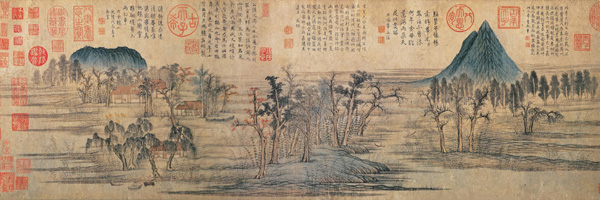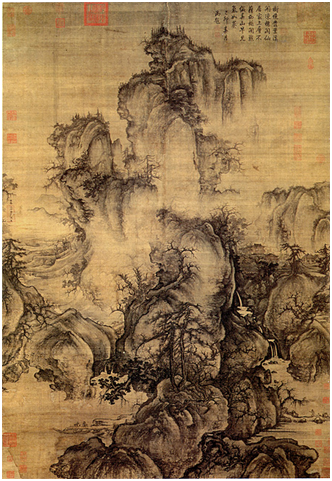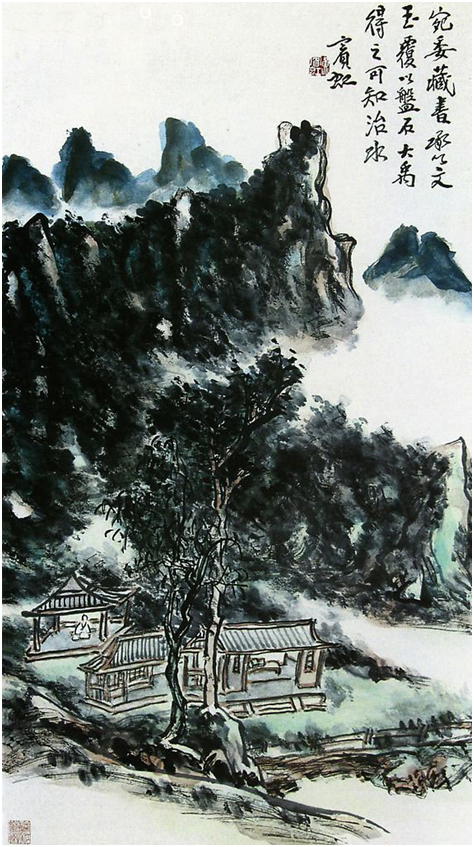李佳姬
趙孟頫的这山水画又有名又很有意思。画里有两座山- 在右边的山比在左边的更高,更陡。画里也有很多树, 几个建筑物。他一般用蓝色黑色和咖啡色,可是有的时候也用红色, 大多数的画是深色的,所以红的水果醒目得不得了。
趙孟頫是1254年出生的; 他是一个宋朝的王子,可是这画的背景是元朝. 别的中国画家大家都想模仿他艺术代表的感情。他觉得表达他的情感比画表面的自然界更重要。拿这张山水画来说, 他故意地用简单的颜色,因为他不想夸大。尽管他是一位马画的名家, 我选了这张画因为我喜欢朴素的画。
要是我在画里,我希望去最左边的建筑物,因为它的颜色不太黑暗。看起来在家有光; 它好像一个受欢迎的地方: 暖的,安全的,高兴的。我觉得这建筑物代表趙孟頫的家.
Zhao Mengfu’s landscape painting is not only famous but also very interesting. In the painting, there are two mountains- the one on the right is taller and steeper than the other. Also in the painting are many trees and several houses. The painter generally uses blue, black and brown but sometimes also uses red. The majority of the painting has a dark tone so the red fruits stand out a lot.
Zhao Mengfu was born in 1254. He is a prince of the Song dynasty although the painting is set in the Yuan dynasty. China has many famous painters but everyone considers Zhang Mengfu as the model of personal expression. He believed expressing his feelings was more important than superficially painting landscape. For example, in this specific painting, he deliberately uses simple colors because he does not wish to exaggerate (nature). He is famous for his horse paintings. I chose this painting because I liked its simplicity.
If I were in the picture, I hope to go to the house on the far left hand side of the picture because it is not as darkly colored. It seems like a welcoming place: warm, safe and (exuding) happiness. I believe this structure symbolizes Zhao Mengfu’s home.





